Gyeongju
-
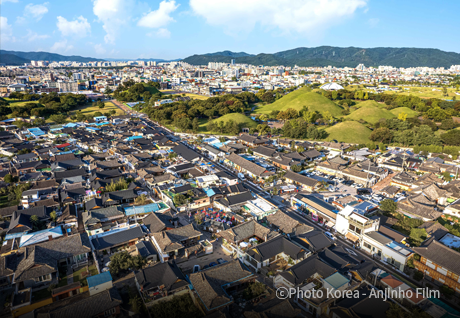
-
Hwangnidan Street
Hwangnidan Street features a variety of restaurants, cafes, photo studios, and shops popular amongst the younger generations in Korea. A standout feature of Hwangnidan Street is its ‘newtro’ aesthetic, which combines nostalgic, retro elements with a modern twist, thanks to the preserved building from the 1960s and 1970s. Hwangnidan Street is also conveniently located near some of Gyeongju’s most famous attractions, including Cheomseongdae Observatory and Daereungwon Ancient Tombs, making it a popular stop for visitors exploring the city.
- Address: 1080, Poseok-ro, Gyeongju-si, Gyeongsangbuk-do
- Tel: +82-54-772-3843
-
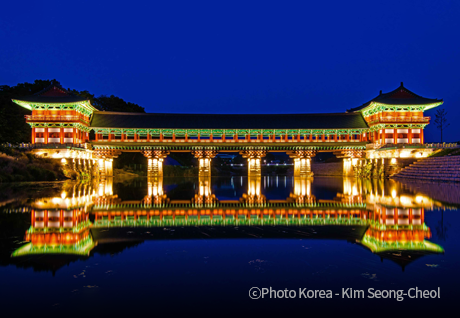
-
Woljeonggyo Bridge
Woljeonggyo Bridge, located in Gyo-dong, Gyeongju, was originally built during the Unified Silla period (AD 676-935) but was destroyed during the Joseon Dynasty. After extensive research, the bridge was rebuilt in April 2018, and now stands as the largest wooden bridge in Korea. Today, Woljeonggyo Bridge is a popular destination for visitors, especially at night. It is open until 10 PM, offering breathtaking views of Gyeongju’s beautiful nightscape.
- Address: 48 Gyo-dong, Gyeongju-si, Gyeongsangbuk-do
- Tel: +82-54-779-6138
-
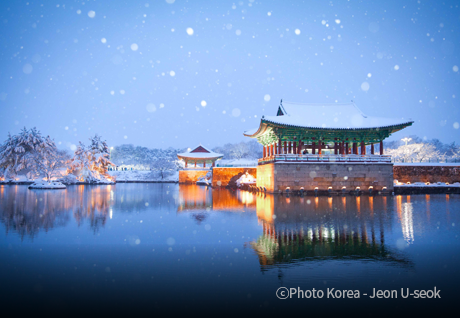
-
Donggung Palace and Wolji Pond
The Donggung Palace, one of the royal palaces of the Silla Dynasty, features well-preserved gardens that were exhibited during the Unified Silla period. Many ancient cultural artifacts that offer insights into the everyday lifestyle of the time have been discovered on the premises. Wolji Pond, an artificial pond, is named for its meaning, ‘a pond that mirrors a reflection of the moon.’
In the 14th year of King Munmu’s reign (674 AD), the king ordered the construction of the pond with a mountain placed to the northeast. The pond was adorned with beautiful flowers and trees, and rare birds and animals were raised here.
Donggung Palace and Wolji Pond are among Gyeongju’s most iconic historical sites, offering visitors a chance to experience the gardens of the Silla era and feel the pulse of history. Whether by day or night, this site offers a unique charm that captivates all who visit.
- Address: 102 Wonhwa-ro, Gyeongju-si, Gyeongsangbuk-do
- Tel: +82-54-750-8655
-
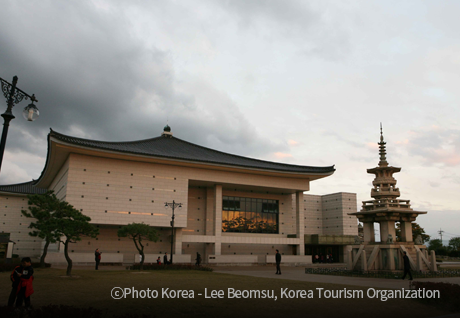
-
Gyeongju National Museum
Gyeongju National Museum houses numerous historical and cultural artifacts of the Silla Dynasty. The museum offers various programs, including those at the Children’s Museum School. The newly renovated Silla Art Gallery and Silla History Gallery are particularly popular among visitors. This multi-complex center showcases the rich history of the Silla Dynasty through its diverse collection of artifacts.
- Address: 186 Iljeong-ro, Gyeongju-si, Gyeongsangbuk-do
- Website: gyeongju.museum.go.kr/eng/
- Tel: +82-54-740-7500
-
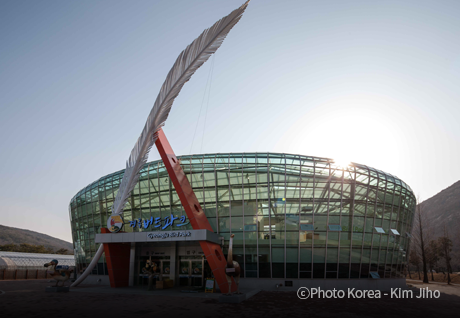
-
Gyeongju East Palace Garden
Gyeongju East Palace Garden brings Korea’s first zoo and botanical garden to life, with a modern touch inspired by the Donggung Palace and Woliji Pond. This year-round destination includes the Donggung Botanical Garden, interactive experience areas and the Bird Park, offering a unique opportunity to engage with both plants and animals.
Explore the Donggung Botanical Garden, designed in the traditional style of the Silla royal palace, featuring over 12,000 plants from 500 species in its beautiful glasshouse. The Flower Nuri Experience Hall invites you to experience flower pressing and terrarium-making, while the Insect Hall offers a hands-on opportunity to interact with fascinating bugs. The Bird Park features over 3,000 birds from 250 species, including penguins, parrots, and flamingos, making it the largest year-round interactive botanical garden housed in a single building
- Address: 74-14, Bomun-ro, Gyeongju-si, Gyeongsangbuk-do
- Tel: +82-54-760-7442
-
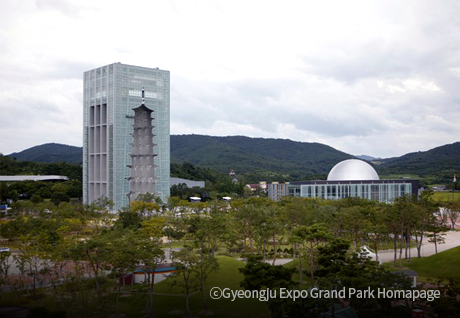
-
Gyeongju Expo Park
Gyeongju Expo Park, opened in 1998 as the world’s first international cultural exhibition focused on arts and culture, is a must-visit cultural hub. The park is home to Gyeongju Tower, an observatory deck designed to recreate the 82-meter-high wooden pagoda of Hwangnyongsa Temple from the Silla Dynasty, allowing visitors to travel back in time to ancient Silla. The park also boasts the Expo Cultural Center, a vibrant performance venue where visitors can enjoy exciting shows like ‘The Show: Silla’ inspired by K-musicals and ‘Infinity Flying.’
In 2025, during APEC 2025 KOREA, Gyeongju Expo Park will host a series of exhibitions showcasing Gyeongsangbuk-do’s economic history and advanced industries with themed pavilions like the Korea Industrial History Pavilion, Advanced Future Industries Pavilion, Corporate Pavilion, and Korea Hydro & Nuclear Power Pavilion.
- Address: 614 Gyeonggam-ro, Gyeongju-si, Gyeongsangbuk-do
- Website: www.cultureexpo.or.kr/open.content/english/?hl=en
- Tel: +82-54-740-3990